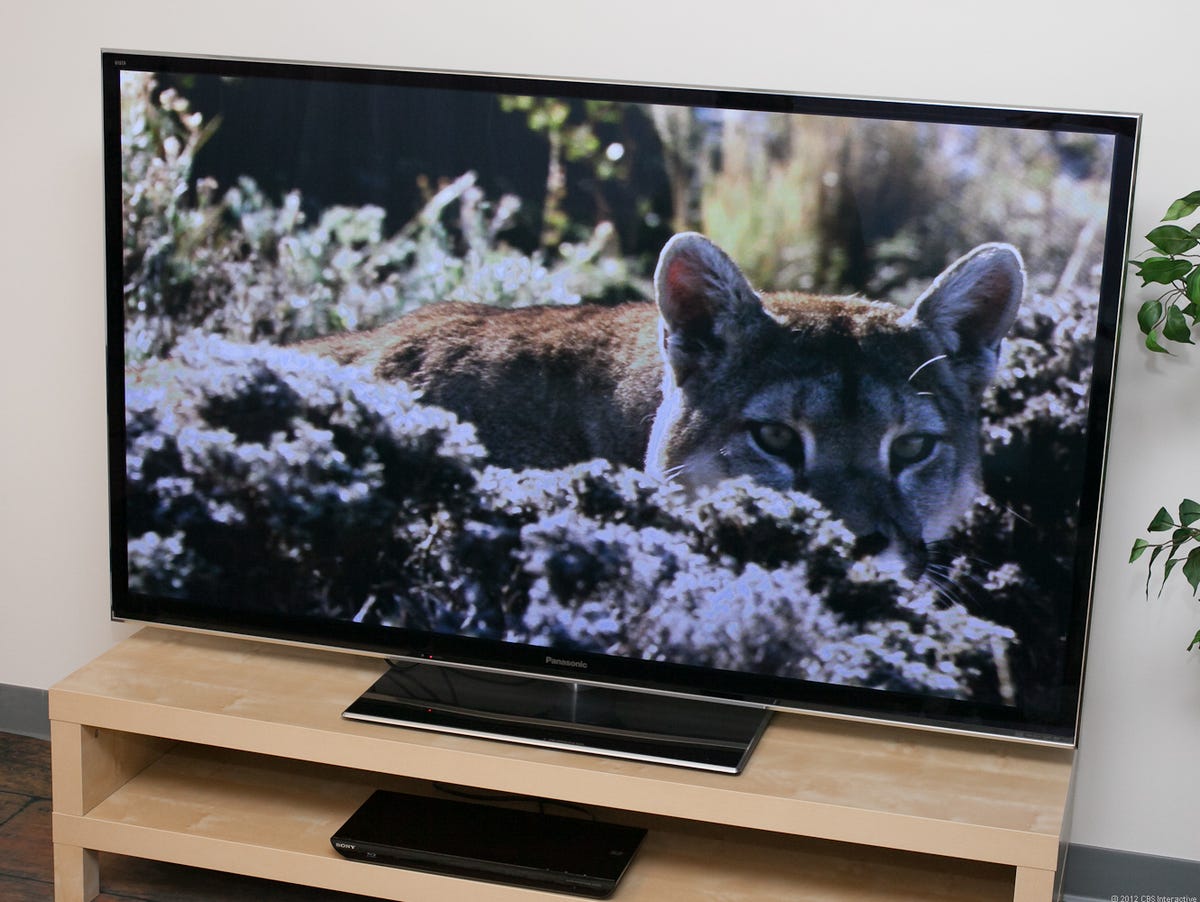Panasonic TC-PVT50 series (pictures)
The Panasonic TC-PVT50 series represents the pinnacle of current flat-panel TV picture quality.

Overview
By "not cheap" I mean "$1,000 more than an ST50" as of press time. And while the VT50's picture is amazing enough to drop even the most jaded of jaws, the ST50's isn't much worse. It's certainly not a Cleveland worse, at least to most viewers. If you, however, count yourself among the few who might actually consider spending that much extra to get the best TV since the Kuro, the Panasonic VT50 is a tempting target for a big chunk of living-room wall. If you count yourself value-conscious, the ST50 is a pretty good way to settle.
Top corner detail
Bottom corner
Top corner detail
Profile view
Side buttons
Stand
Inputs
Touch pad remote
Touch pad remote in-hand
Touch pad remote sensitivity
Touch pad remote Bluetooth pairing
Standard remote
3D glasses (Panasonic TY-ER3D4MU)
VieraCast home
Custom apps placement
'Multitasking'
Tools menu
THX mode
2-point grayscale
Advanced adjustments
Picture quality
The only TVs that can compete with the Panasonic VT50 are the Sharp Elite and, yes, that hoary veteran the Pioneer Kuro (circa 2008). Ignoring size differences (the Kuro maxed out at 60 inches) and the fact that you can't get one anymore, I actually would still rather watch the Kuro than this Panasonic -- but it's very close. The VT50 is a better TV overall than the Sharp Elite, however, despite the latter's arguably superior black-level performance. My vote goes to the Panasonic for its more accurate color and perfect screen uniformity. Of course if you sit anywhere but the sweet spot in front of the middle of the screen, the Panasonic's advantages increase. The only reason I'd recommend the Sharp Elite instead is if you can't control ambient light in the room (and if you can't, you might as well get a lesser TV anyway), you really value 3D performance, or you really want the 70-inch Elite's larger screen.
As you can probably guess by now, the VT50 earned a "10" in this category. Its only real flaws are excessive crosstalk in 3D and some wonkiness during calibration, but neither of those can keep it from taking the 2012 TV picture-quality crown -- and serving as my new reference TV. It's clearly Panasonic's best plasma ever, and creates some stiff competition for the OLEDs arriving later this year.

